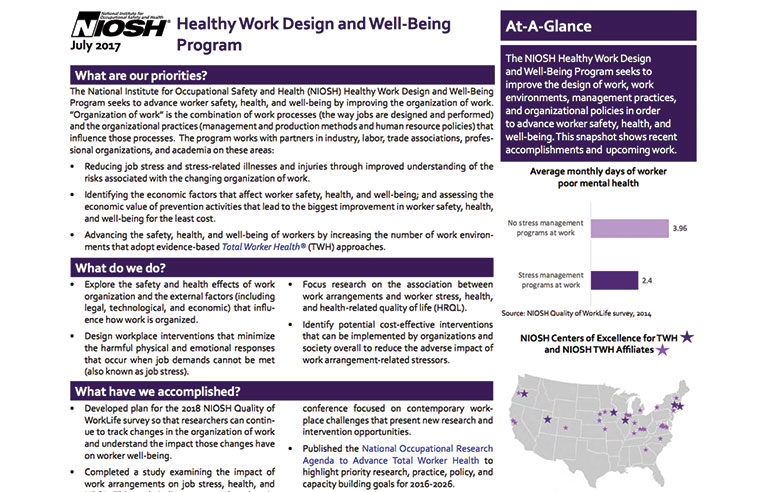NIOSH publishes overview of Healthy Work Design and Well-Being Program

Washington – NIOSH has released an overview of its Healthy Work Design and Well-Being Program, which seeks to improve the “organization of work.”
NIOSH defines organization of work as the manner in which jobs are designed and performed, as well as organizational practices – such as management, production methods and human resources policies – that affect work processes.
The one-page overview details the Healthy Work Design and Well-Being Program’s priorities and mechanics, NIOSH’s accomplishments, and forthcoming actions.
The program “works with partners in industry, labor, trade associations, professional organizations and academia” in the following areas:
- Reducing job stress and stress-related injuries and illnesses through a better understanding of the risks associated with the changing organization of work.
- Pinpointing economic factors that play a role in worker safety, health and well-being. The program also seeks to examine prevention measures with the best return on investment.
- Growing the number of work environments that adopt evidence-based Total Worker Health approaches.
Among the accomplishments listed are the development of a plan for researchers to track changes in the organization of work and understand the impact of the changes on worker well-being, and publication of the National Occupational Research Agenda to Advance Total Worker Health.
Post a comment to this article
Safety+Health welcomes comments that promote respectful dialogue. Please stay on topic. Comments that contain personal attacks, profanity or abusive language – or those aggressively promoting products or services – will be removed. We reserve the right to determine which comments violate our comment policy. (Anonymous comments are welcome; merely skip the “name” field in the comment box. An email address is required but will not be included with your comment.)

